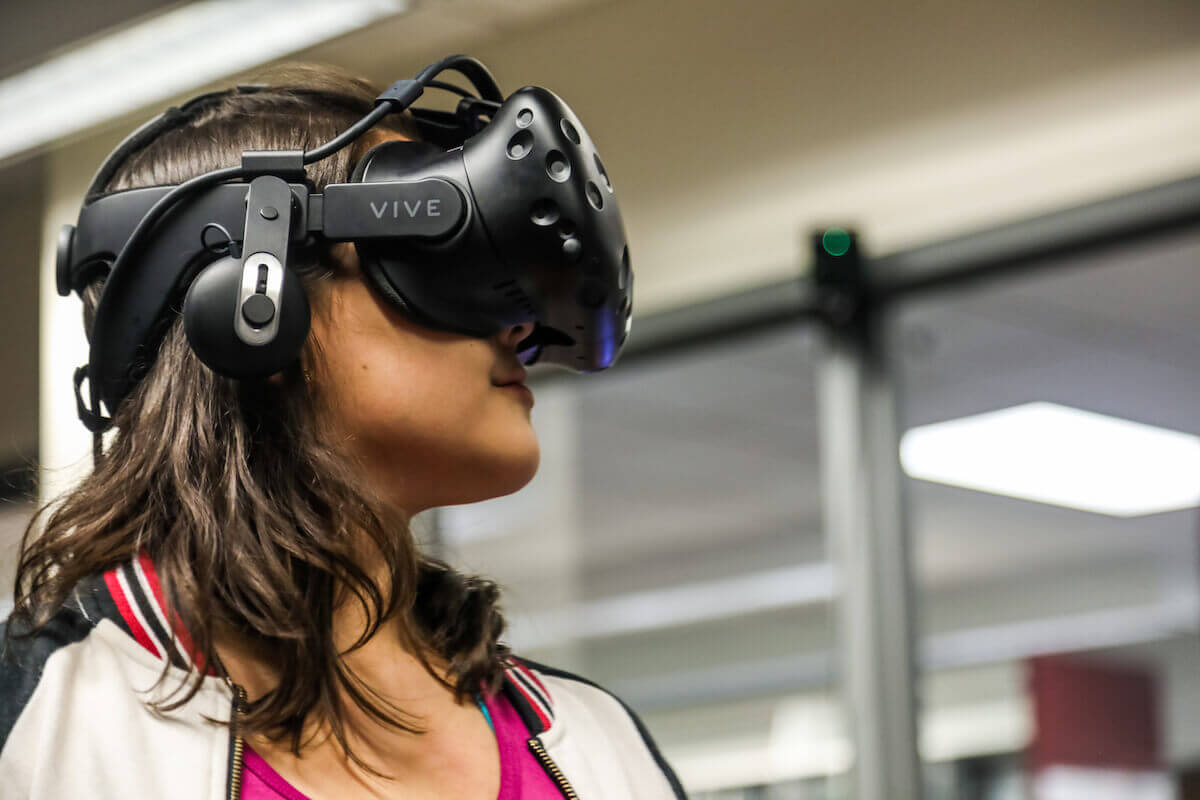Please note: The casting call date has been changed from Sept. 15 to Sept. 23. Those who can’t make the casting call due to distance can show up at 9:30 a.m. Sept. 30, at the Shenandoah Valley Civil War Museum wearing a white shirt and black pants.
Shenandoah University is seeking participants to step back in time and recreate a virtual reality experience that the community and its visitors can enjoy.
The Shenandoah Center for Immersive Learning (SCIL), in coordination with Shenandoah’s McCormick Civil War Institute and the Shenandoah Valley Battlefields Foundation, is looking for participants to re-create John Brown’s historic trial for a virtual reality film project. Brown was an abolitionist who, in 1859 in Charles Town, Virginia, (now West Virginia), was hanged for murder, treason and inciting a slave insurrection.
“Virtual reality moves history from an intellectual experience to a visceral experience,” said SCIL’s executive director, Associate Professor of Theatre J.J. Ruscella, M.F.A. “It allows it to live for the student.”
The casting call for the re-created three-day trial will take place from 9 a.m. to noon Sunday, Sept. 23, in the Shenandoah Valley Civil War Museum on the Loudoun Street Mall.
The casting call is for 33 primary roles, including some speaking roles, and up to 150 extras for the large crowd at the trial. All roles must be filled by boys and men, 14 and up, for historical accuracy. Acting experience is not required. Applicants who have accurate period costume are encouraged to wear it to the casting call.
Filming will take place from 11 a.m. to approximately 6 p.m. on Sept. 30 at the courthouse. There is a 9:30 a.m. call time for actors. This event is not open to the public.
The trial will be filmed and converted into a 7-to-9-minute 360-degree virtual reality experience that the Shenandoah Valley Civil War Museum will then launch when the project is complete. Visitors who put on the 360-degree VR headsets will find themselves sitting in the courtroom for one of the most momentous trials in American history. Users will be fully immersed in the tense environment, surrounded by reporters and a raucous crowd, and will have an up-close look at John Brown’s memorable closing remarks. Narration and period imagery will tie together the experience and help viewers to understand why this was such a pivotal moment in America’s history and the spark that lit the fuse of the Civil War.
In addition, a “traveling” version of the John Brown VR Experience will be made available to schools, complete with additional materials to help teachers make the most of the opportunity to bring history to life.
“We are thrilled to be working with SCIL and Shenandoah University on this project,” said Keven Walker, chief executive officer of the Shenandoah Valley Battlefields Foundation. “We’re excited to be able to offer such a unique experience for our museum and equally excited about sharing the experience with schools. This will be a powerful new tool for engaging both young and old with the history of the Civil War era.”
Jonathan Noyalas, director of the McCormick Civil War Institute, wrote the script for the reenactment.
“John Brown’s trial was an epic moment, arguably the trial of the 19th century,” Noyalas said. “It was that trial, a result of Brown’s raid on Harpers Ferry in October 1859, that arguably made the divide between North and South widen to an unbridgeable point. This was a trial that not only captured the interest of Jefferson County, the Shenandoah Valley and Virginia, but of the nation and the world. Slavery’s wedge had agitated the Republic since the moment of its foundation, and the events surrounding Brown’s trial arguably ignited the fuse which eventually exploded the powder-keg of the Civil War in the spring of 1861.”
SCIL brings literature, history and career moments to life using 360-degree virtual reality and augmented reality. Over the past year, it has recreated an African American sit-in experience, called “Atmosphere of Hate,” in which it used Shenandoah University students and staff members as actors. It has also created numerous clinical experiences, in which students wearing VR goggles can serve as a patient or doctor during a hospital experience. Sometimes, the VR user is made the patient in an entirely Spanish speaking exam room in order to teach empathy. Problem solving, communication and adapting to stress are also benefits of the virtual reality experience.
“Virtual reality fills the gap existing between education and career preparation,” said Ruscella. “The way it does that is by bridging between the lecture and life experience.”
The John Brown trial will be the longest individual piece created by SCIL and the longest historically, spanning three days. It is the first of more potential projects with the museum and Battlefields Foundation.
“I love the idea of the community coming together to create this,” Ruscella said. “This community is steeped in the history of Americana.”
To sign up for the casting call, visit www.ShenandoahAtWar.org and scroll to the bottom.




